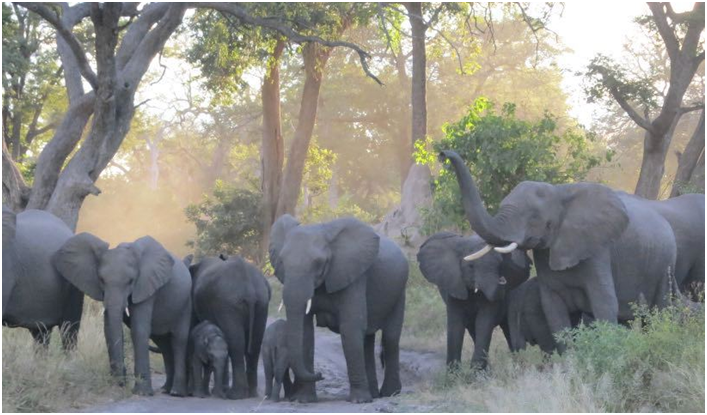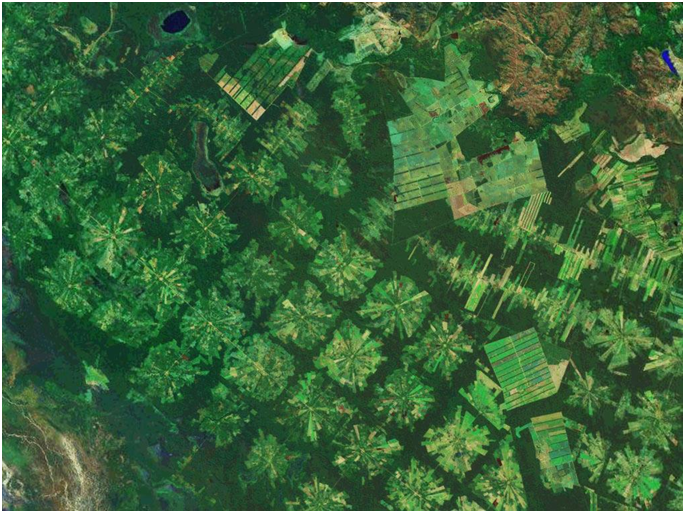Technology now plays a crucial role in improving our understanding and protection of nature.
Scientists and decision-makers need timely and reliable tools and data to assess the status and trends of species and ecosystems. Front-line conservationists want to understand the range of technology options before investing scarce resources. However, the challenges of keeping up with and mastering emerging technologies that might be applicable to a conservation objective are daunting.
Artificial intelligence, remote sensing, big data, DNA analysis, virtual reality, smartphone apps, drones, camera traps, acoustic sensors, and other developments are becoming available to increasingly broad audiences, yet potential users in the conservation sector are often unaware of them.
We highlight these and other valuable technologies, as well as the scientists and resource managers making innovative use of available tech in their work.

Specifically, we launched Mongabay-Wildtech in 2015 to inform a broad, relevant audience of these advances to catalyze their use worldwide. We aim to help teams in the field who may lack access to information on available technologies, to inform tech companies who often do not know what technologies could readily help conservation, and to inspire potential supporters of the development and use of new technologies.
Wildtech has since become a trusted source of independent coverage of both existing and emerging technologies and has demonstrated a keen eye for recognizing cutting-edge technologies with the potential to transform nature conservation and research.
Wildtech has posted over 220 articles on a wide range of innovations, from camera traps in trees and acoustic monitoring of bees, to virtual reality in the classroom and DNA analysis in the rainforest, and drones in the fight against wildlife poaching.
Wildtech also aims to inspire the conservation and research communities by highlighting teams that are combining technologies creatively to save habitats, plan corridors, protect endangered species, and better understand what wildlife needs to survive. We have interviewed scientists who are merging animal-tracking data with remote-sensing imagery to identify human impacts on animals over large scales, as well as Amazon rainforest conservationists combining satellite imagery and online forest loss alerts to publicly identify deforestation hotspots.

The series
Mongabay.com is now looking for article pitches that will foster a better understanding of how and where technology is being used to facilitate research and conservation of nature.
We seek in particular pitches or stories on uses of artificial intelligence/machine learning that could be applied to research and conservation projects, as well as stories on data collection sensors, such as cameras, tracking tags, and acoustic monitoring devices.
Field teams must maintain communication among their people and devices in the field, so pitches could also highlight technologies and techniques that enable rapid communication between sensors and researchers, managers, and the public. These could include online mapping and data management platforms, machine learning, unmanned aerial vehicles, citizen science data collection, crowd-sourced verification, and learning apps.
We are also interested in how scientists and resource managers at all levels are making innovative use of these technologies to improve their work and conservation outcomes.

We want the series to address some key questions about applying technology to conservation, such as:
• How is a particular technology or technique (e.g. AI, remote sensing, camera traps) already being used successfully in the field for conservation or research, and by whom?
• How well have particular technologies helped to achieve conservation outcomes under various conditions?
• How has a particular category of technology (e.g. drones, satellite imagery, camera traps) evolved in terms of its value for conservation and research?
• What are some of the standout examples of conservation tech innovation that have been successfully adopted (and adapted?) by conservation teams? And why have they been successful?
• What tech innovations in other sectors could be applied to nature conservation and research work?
• Who’s driving the development or use of certain technologies?
• What challenges have limited the use of certain techniques or technologies in certain situations or among certain groups? (Funding is always limited — we’re thinking more of environmental conditions, institutional, political or social constraints, or species for which certain techniques don’t work.)
• What key lessons have the practitioners learned from developing or using certain types of technologies that could help groups address similar challenges in the future?

Series details
Article length/photos
We’re looking for stories of approximately 800 to 1,800 words in length. Stories will be paid on a per word basis, up to a maximum of 1,800 published words. They will include quotes from at least one original interview obtained either in person or via email, phone or Skype. There is no geographic limitation in our selection criteria.
Authors will be expected to assemble five to eight publishable photos to accompany their articles (either original, provided by those interviewed, or found free of copyright restrictions online). All articles need to include a list of numbered pictures with numbered captions and photo credits.
Send us your pitch
Please submit your pitch here. We suggest that before pitching, you visit https://wildtech.mongabay.com/ and search to see if your story idea has been covered, and if so, how any newly proposed coverage would be fresh content.
Pitches should be roughly 500 words long for each proposed story and summarize the article(s) you wish to write. They should clearly explain the specific subject you would like to write about, why it is important, and your approach to covering it. They should describe a few research sources and who you would interview.
We’ll also need you to submit your journalism résumé and two clips of previous relevant work. Applications should be submitted in English, and all final reporting will be published first in English. Final reporting could potentially be translated into another language and published by Mongabay. This is an ongoing pitch solicitation, so there is no deadline for submissions.
Mongabay will negotiate all fees and contracts on a per-story basis. Completed stories will be paid per word, depending on journalist’s experience and complexity of the reporting. Small sums (~$100) may be available to help defray communications or local travel costs.
Completed stories will be published on Mongabay.com under an open Creative Commons license that allows for sharing and reposting.
We look forward to hearing from you!
Mongabay’s readership of roughly 2.5 million unique visitors each month includes decision-makers in public, corporate, and civil society institutions, researchers, and on-the-ground conservationists who can apply technologies to their specific areas of interest. Mongabay-Wildtech highlights applications of existing and emerging technologies that are increasingly playing key roles in improving our understanding and conservation of nature worldwide.